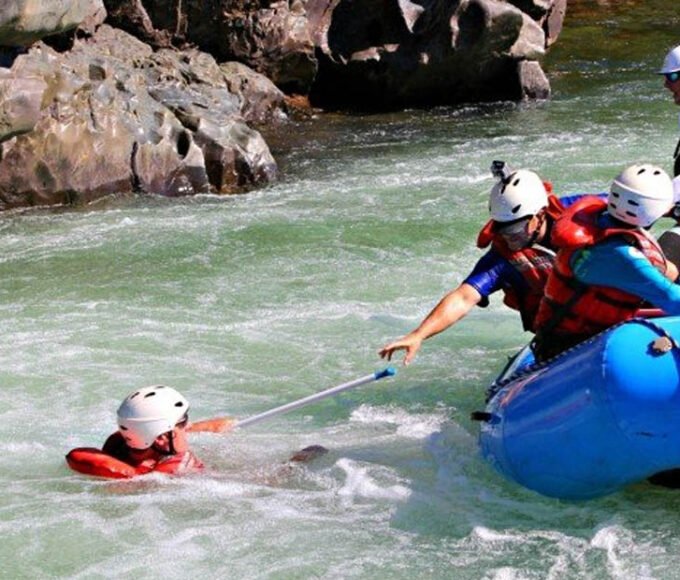Motorcycle touring in Thailand is an adventure that offers an unparalleled sense of freedom and a unique way to explore the country’s diverse landscapes, rich culture, and vibrant cities. However, to ensure a safe and enjoyable journey, careful preparation is essential. This article will guide you through the key steps to prepare for your motorcycle tour in Thailand.
1. Understanding the Legal Requirements
Understanding the legal requirements is the first and foremost step in preparing for a motorcycle tour in Thailand. As a foreign rider, you are required to have an International Driving Permit (IDP) with a motorcycle endorsement. If you don’t possess an IDP, you can opt to apply for a Thai driving license, but be aware that this can be a lengthy process. Additionally, Thailand’s law mandates the use of helmets for both the rider and any passengers at all times. Non-compliance with these laws can lead to fines or even more serious legal issues. It’s also worth noting that insurance is a must-have, so ensure you have adequate coverage before you embark on your journey.
2. Choosing the Right Motorcycle
Choosing the right motorcycle for your tour in Thailand is a critical decision that can significantly impact your overall experience. The ideal bike for you will depend on several factors, including your riding skills, the type of terrain you plan to traverse, and your comfort preferences. For city rides and shorter trips, a scooter or a small motorcycle might be sufficient. However, for long-distance touring or if you plan to venture off-road, a larger, more robust bike would be more suitable. Renting a motorcycle in Thailand is a straightforward process with many reputable rental companies offering a wide range of options. However, it’s crucial to inspect the bike thoroughly to ensure it’s in good condition before setting off on your journey.
3. Planning Your Route
Planning your route is an essential part of preparing for a motorcycle tour in Thailand. The country offers a wide array of routes, each with its unique charm and attractions. For instance, the Mae Hong Son Loop in the north is renowned for its mountainous terrain and winding roads, offering a thrilling ride and breathtaking views. On the other hand, the southern coastal routes provide stunning ocean vistas and opportunities for beach stops. When planning your route, consider factors such as distance, road conditions, weather, and points of interest. It’s also a good idea to have a flexible schedule to accommodate unexpected detours or delays, ensuring you have ample time to enjoy the journey and not just the destination.
4. Preparing for the Climate
Thailand’s tropical climate can be challenging for riders not used to hot and humid conditions. The country has three seasons: hot, rainy, and cool. The cool season (November to February) is the most comfortable for riding. However, if you’re touring in the hot or rainy season, prepare for intense heat or heavy rainfall. Pack appropriate riding gear, stay hydrated, and protect yourself from the sun.
5. Packing Essentials
Packing for a motorcycle tour requires careful consideration. Space is limited, and carrying unnecessary weight can affect your ride. Essentials include a good-quality helmet, riding gear, a first-aid kit, a tool kit for minor repairs, and a waterproof cover for your luggage. Don’t forget your documents, including your passport, driving license, and travel insurance details. Also, pack light clothing, toiletries, and a reusable water bottle.
6. Staying Safe on the Road
Staying safe on the road is paramount when embarking on a motorcycle tour in Thailand. The country’s roads can be bustling, and local driving habits might differ significantly from what you’re accustomed to. Always prioritize defensive riding, stay within speed limits, and avoid riding after dark when visibility is reduced. Be particularly cautious in rainy conditions, as roads can become slippery and more challenging to navigate. Regularly check your motorcycle for any maintenance needs and always wear appropriate safety gear. Additionally, it’s crucial to have travel insurance that specifically covers motorcycle riding. By prioritizing safety, you can enjoy your tour while minimizing risks.
7. Respecting Local Culture
As you travel through Thailand, remember to respect local customs and traditions. When visiting temples or rural places, please dress modestly. Learn a few basic Thai phrases, and always greet locals with a smile. Avoid discussing sensitive topics like the monarchy or politics. By showing respect and understanding, you’ll enrich your travel experience and leave a positive impression.
Conclusion
In conclusion, motorcycle touring in Thailand is an incredible adventure that requires careful preparation. By understanding the legal requirements, choosing the right motorcycle, planning your route, preparing for the climate, packing essentials, staying safe on the road, and respecting local culture, you can ensure a memorable and rewarding journey. Whether you’re cruising along the scenic coastal roads, navigating the bustling city streets, or exploring the mountainous northern regions, motorcycle touring offers a unique perspective of Thailand’s beauty and diversity. So gear up, ride safe, and enjoy the ride of a lifetime in the Land of Smiles.
















